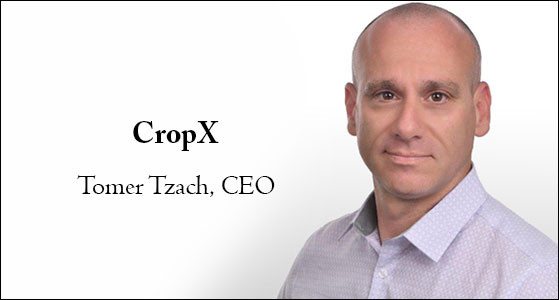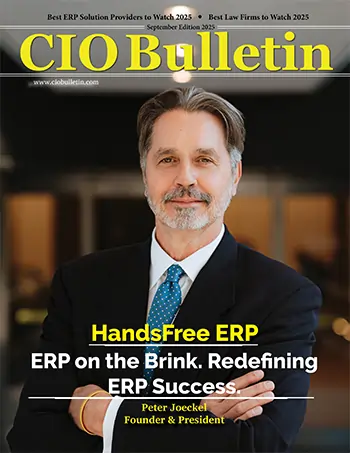Business excellence award 2021
CIO Bulletin

Satellite imagery has revolutionized pest-control for a while now. But when CropX established itself there were no proper developments that would indicate that data-driven farming could revolutionize the agriculture sector. CropX was founded in 2015 as it set out to automate farm management using Ag Analytics.
Very early on, CropX came to understand that for management of irrigation and fertilization in a precise, predictive and effective manner, data would have to be integrated from satellites and from the ground. This would cover the entire soil-plant-atmosphere continuum. Today, the company is pioneering data-driven solutions which help get the most out the fields, getting bigger and better yields.
Insights for Bigger Yields
Better yields in farming are closely associated to how you manage water, fertilizer, energy, and labor. CropX set out to optimize the input application for these parameters that dictate the yields at harvest. CropX’s models constantly adapt to the crop’s growth stage and to the changing conditions of the soil and weather, to provide crop-specific recommendations that help achieving maximal yield, validated in the field to generate a 10% crop-yield enhancement.
The company commercialized the first generation of its product in 2017, offering a revolutionary farm management tool: a platform comprised of a unique & proprietary soil sensor, integrated into a big data platform along with all of the additional relevant data layers. CropX’s system could automatically generate an adaptive, variable-rate irrigation prescription that takes into account the changing conditions of the soil and weather, constantly adapting to the specific crop needs and its growth stage.
In 2021, by analyzing crop growth against crop models, CropX can predict the crop’s needs and expected growth, and can detect any deviation and identify early-stage field variability and non-uniformity of crop growth. The company can provide crop-specific recommendations and send alerts about field segments that need attention due to potential risk from pests or diseases.
The CropX app can help figure out exactly how much to irrigate the field, by providing an irrigation prescription that is constantly adapting to the changing conditions of the field. By factoring in thousands of data points from previous cases, CropX can predict water-uptake patterns, detect faulty irrigation system and burst pipes and improve the decision-making process.
The company also helps in optimizing inputs and monitoring the movement of water and agrichemicals in the soil to minimize environmental pollution and prevent leaching, runoff and unnecessary resource expenditures to help avoid soil degradation.
Behind all this output is the company’s cloud platform that crunches data from the soil sensors integrated with multiple layers, to provide the best insights on when, where and how much to irrigate and fertilize and the best crop protection plan to follow.
Leveraging Big Data through AWS
Most high-quality soil sensors require lengthy and complicated installation and calibration, which contributes to rising costs and hinders scalability. These sensors also create large amounts of raw data that farmers can’t easily interpret. The only way to process this data in real time, while integrating additional data layers, is in the cloud. As a startup, CropX realized that the cloud was its best option for quickly building and scaling its agricultural analytics application.
The company chose to run its in-soil sensor data solution on Amazon Web Services (AWS). The CropX big data solution captures data from thousands of global soil sensors and sends it to a centralized platform running on hundreds of Amazon Elastic Compute Cloud (Amazon EC2) instances. The solution analyzes and saves satellite imagery data to Amazon Simple Storage Service (Amazon S3) buckets and uses Amazon Relational Database Service (Amazon RDS) as its primary database and the core for storing all agronomical data and insights. Additionally, CropX relies on Elastic Load Balancing to support growing traffic from web and mobile devices, and it uses Amazon Simple Queue Service (Amazon SQS) to transfer messages between different services.
By running on AWS, CropX is helping its farming customers contribute to increased sustainability by using less energy and fewer resources. For example, during irrigation experiments using its technology, CropX has demonstrated more than 40 percent water savings across different crop types, with a 10 percent yield increase.
The Leader
Tomer Tzach, CEO
He joined CropX on January 2017 as the CEO. Tomer is a seasoned manager with strong technological and financial background, including managing three technological companies that generated multi-million-dollar revenues, two of which were acquired by strategic investors under his leadership. In addition, Tomer was an acting partner at Eurofund, Israel’s most successful vintage 2000 VC fund. Tomer spent 7 years in the Israeli Air Force serving as a pilot.
He holds an MBA from the University of Haifa (summa cum laude) and BA in computer science from the Technion.
“The CropX app can help figure out exactly how much to irrigate the field, by providing an irrigation prescription that is constantly adapting to the changing conditions of the field.”







